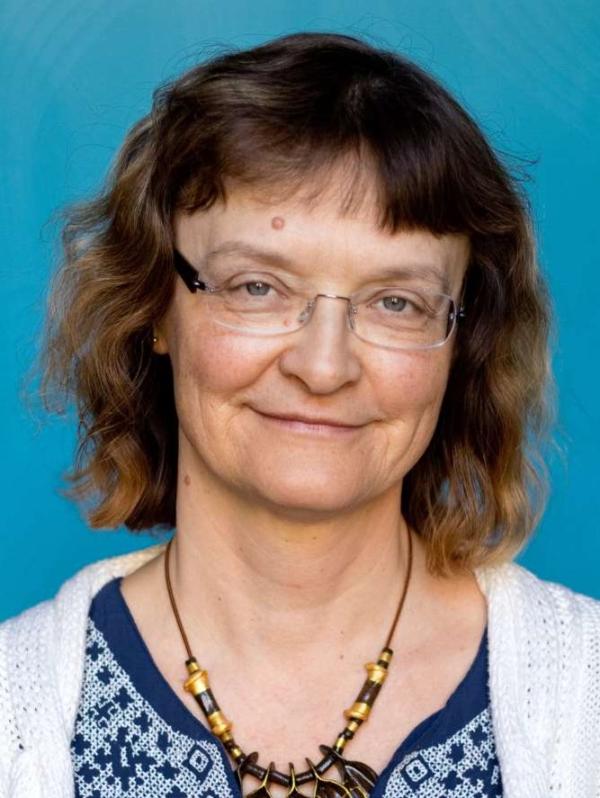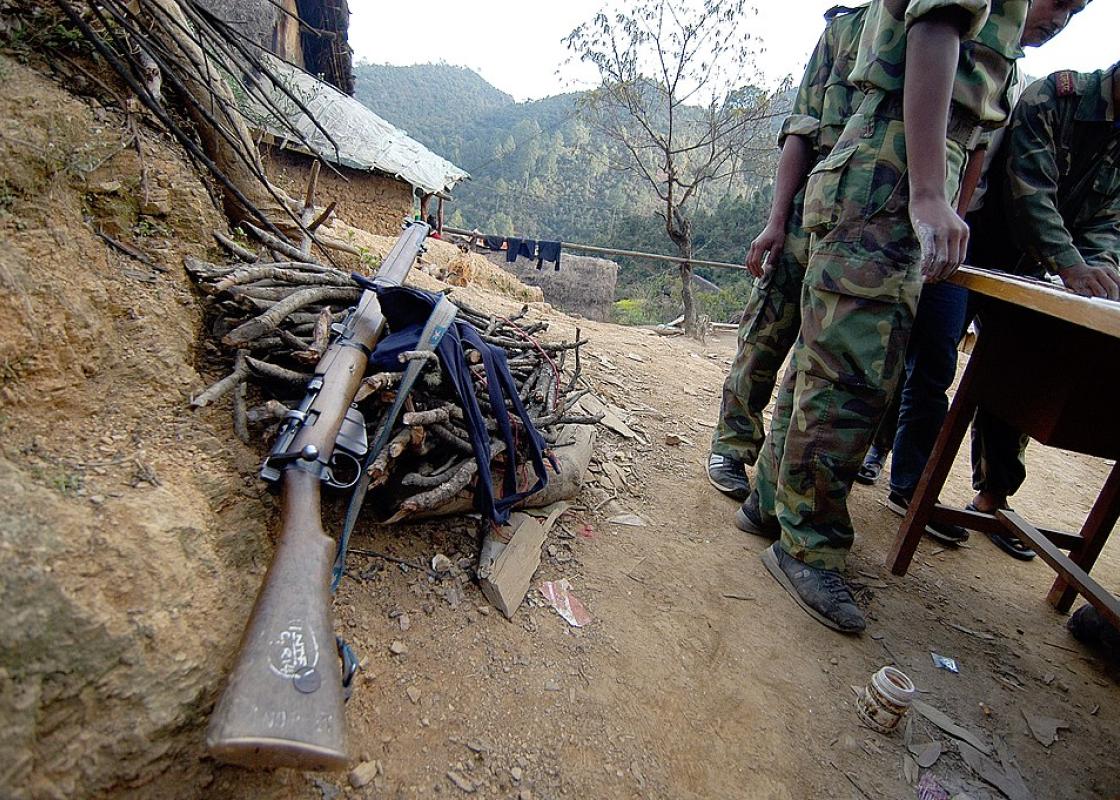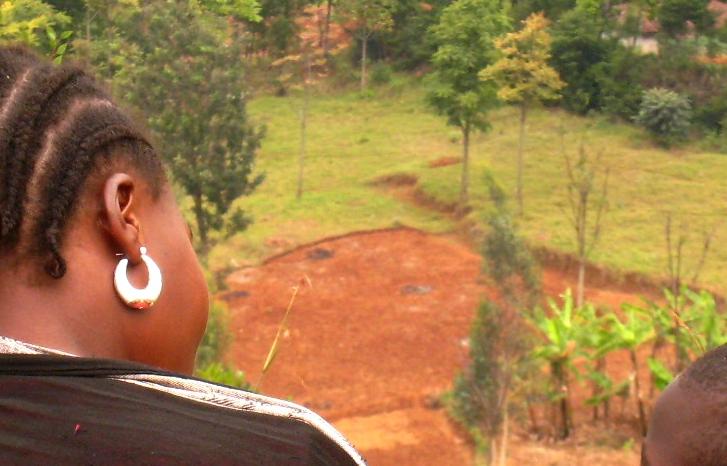“I don’t agree with the use of the term ‘child soldiers’. It is too strongly associated with forced conscription, which is not always the case,” says author of report and researcher Wenche Iren Hauge at Peace Research Institute Oslo (PRIO).
In her report, she has interviewed former underaged members of the guerrilla group FARC (Fuerzas Armadas Revolucionarias de Colombia) in Colombia and the Maoist guerrilla group PLA (People’s Liberation Army) in Nepal.
Most of the research on underaged members of guerrilla groups is from Africa, north of the Sahara, Hauge explains.
“The research from African countries often describes child soldiers who have either been recruited by force and violence or kidnapped to guerrilla groups,” she says.
“Consequently, these are the typical situations you envision when you hear the word ‘child soldier’. My studies from Colombia and Nepal show that in these countries, many enlisted voluntarily. And many even experienced improved quality of life as members of the guerrilla group.”
Fled from poverty and terror
According to Hauge, many minors join guerrilla groups at the age of thirteen or fourteen. When a peace treaty is signed, the guerrilla soldiers are required to lay down their arms and return to civil society.
“If we presume that they are recruited by force, the return to their home village becomes more understandable. If they have left their home village due to extreme poverty or abuse, however, and voluntarily joined the guerrilla group, it becomes an entirely different story,” she says.

All the minors that Hauge interviewed in Colombia and Nepal came from very difficult backgrounds and they all joined the guerrilla group voluntarily. A few from Nepal said they experienced indirect pressure from members of the family or the home village, since the Maoists encouraged all families to recruit one guerrilla group member.
“Some of them insisted upon joining the guerrilla even when the guerrilla leaders initially told them that they were too young to join.”
According to Hauge, her informants listed poverty and marginalisation as the most common reasons for wanting to join the guerrilla.
“Some had family members who were persecuted by the authorities and feared for their own security. Others were victims of domestic violence,” she says.
“For many in Nepal, another reason for joining was the caste system. Several of the people I interviewed were attracted to the fact that the Maoist guerrilla were opposed to class distinctions and caste discrimination and in favour gender equality.”
As soon as young people are recruited by the guerrilla, we start referring to them as victims, Hauge maintains.
“But they are in fact victims before they are recruited, because they come from poverty and political persecution, and some of them also experience abuse at home.”
Read also: Gender issues are ridiculed and sabotaged in the military
Respect and equality
Hauge has carried out forty-seven in-depth interviews with an approximately equal amount of women and men aged between eighteen and twenty-six. She has studied the differences in the boys and girls’ experiences in both countries, both as members of the guerrilla group and in their home community after their return from war.
“Much of the research on child soldiers has not considered gender differences as relevant. But many of the guerrilla soldiers are women, many more than most people are aware of,” says Hauge.
“The people that I interviewed were in their mid-teens when they joined the guerrilla. In this phase, their gender is naturally highly significant. They live very close with others at an age in which people fall in love very easily.”
A girl told me that she had a boyfriend in the camp, but that they needed the commander’s approval before they could sleep together.
Through the interviews, it became clear that the young women and teenage girls experienced more gender equality and respect as members of a guerrilla group than in the community from which they originated.
“I was surprised to learn about the way in which intimate relations were regulated by the guerrilla leaders,” says Hauge.
“The members were allowed to be in relationships and to get married, even in same-sex relationships, but not until they had gotten to know each other well. Assaults and abuse were severely punished.”
Hauge mentions an example from FARC:
“A girl told me that she had a boyfriend in the camp, but that they needed the commander’s approval before they could sleep together. After a while, her boyfriend became abusive, and when she reported it he was sent away.”
Worst for Nepalese girls
The return to their local community became a shock to most of the girls. Colombia is a typical macho society and Nepal is a gender divided caste society, Hauge emphasises.
“It was particularly bad for the girls in Nepal, as Nepalese society is more traditionally gendered than that of Colombia. The Nepalese girls were harassed and stigmatised when they came back to their local community,” she says.
“This was in stark contrast to the way in which these girls were treated by the Maoists in the guerrilla, who were all opposed to the caste system. They practiced equality and respect between the sexes, and some women were even commanders.”
She relates a story about a Nepalese girl who cried throughout the entire interview.
“The girl fell in love and married a man from another caste while she was in the guerrilla, but she was separated from the adult guerrilla soldiers and sent home because she was under eighteen. When she returned home, she was intimidated and harassed by her family and the local community.”
In Nepal, there were also major differences between those who were compensated by the government and those who were not. This was decided based on how young they were when they were recruited, how long they served in the guerrilla group and whether or not they were still minors when the war ended.
“Those who received financial compensation did better after the war. The situation was worst for those who returned to civil society with two empty hands.”
Received education through FARC
In many countries, ex-soldiers who are still minors when the guerrilla group is dissolved are transferred to temporary care facilities. Some of these are organised by UNICEF, as is the case in Colombia. In Nepal, there were no such care facilities. Here, the demobilization and reintegration process also lasted many years. In Colombia, governmental agencies were actively involved in following up the underaged soldiers.
“During the war, FARC ensured that girls and boys could participate on an equal footing and that girls also learned how to read and write,” says Hauge.
After the peace treaty in Colombia, many former FARC soldiers lived together in camps.
Being a guerrilla member is a hard life. It is highly structured and involves strict discipline.
“There they had several projects in which gender equality was emphasised. Those who had turned eighteen and therefore were permitted to remain with FARC following the DDR process (see fact box), were better off than those under eighteen who were returned to their home community.
The women from FARC interviewed by Hauge said that there were gender equality committees in the camps. But there are of course also reasons to be critical to several sides of the guerrilla groups, she maintains.
“Being a guerrilla member is a hard life. It is highly structured and involves strict discipline.”
Stigmatised in the local community
Milfrid Tonheim is professor at Western Norway University of Applied Sciences. She wrote her PhD dissertation on former girl soldiers in Eastern Congo who are exposed to extensive stigmatisation when they return to their local communities.

“The girls in Hauge’s study and the young women I interviewed in Eastern Congo had very similar experiences of the reintegration process,” says Tonheim.
“Everyday life after the return to family and local community was characterised by stigmatisation and social exclusion. Those who returned pregnant or with children were clearly most exposed to this treatment. Some stated that the stigmatisation by family and friends was more difficult to live with than the violence and the tough life they were exposed to in the military groups.”
According to Tonheim, a big difference is that the women in Hauge’s study missed the gender equality they experienced in FARC and PLA.
“The former girl soldiers I interviewed in Congo were far from equal to their male fellow soldiers. They had all experienced some sort of sexualised violence. Some had experienced individual episodes whereas other had been sex slaves,” she says.
“My research and knowledge of the field points in the direction that the way in which the girls are recruited, whether it is voluntarily or by force, has little significance for how they are received when they return to civilian life. This is also confirmed by Hauge’s report.”
Read also: Returned girl soldiers in Congo are stigmatised
Are looked upon as whores
In her PhD dissertation, Tonheim argued that one possible explanation to the stigmatisation might be a widespread perception of female soldiers as promiscuous.
“Independent of culture and throughout history, the relation between women and violence has challenged gender stereotypes. This has resulted in what is referred to as a ‘whore narrative’ in feminist research,” she says.
“Presumably, such a perception of women who have participated in violence or military groups may provide a breeding ground for stigmatisation when they return to local communities characterised by a traditional view of women.”
Research has shown that the ‘whore narrative’ is prominent also in Western military forces.
Even though female soldiers maintain that sexualised violence was not accepted in FARC-EP and PLA, their involvement in military groups is nevertheless a break with a traditional understanding of gender roles, according to Tonheim.
“Research has shown that the ‘whore narrative’ is prominent also in Western military forces, and it therefore occurs not only in contexts where exposing female soldiers to sexualised violence is accepted.”
Tonheim relates that when she conducted her study a few years ago, the amount of girls in Eastern Congo who received any help at all through a reintegration programme was very low. At that time, this was not only the case for Congo.
“They were often excluded from the programme because they were not armed and were thus not part of the disarmament process. Furthermore, the programmes at the time were far from adapted to the needs of women,” she says.
“For instance, many of the girls returned with children, but the children were not included in the programmes. Nor were the mothers offered any baby-sitting facilities in order to accommodate for their participation in education and psycho-social relief measures.”
The UN must pay attention to the young
Wenche Iren Hauge has previously conducted fieldwork in both Africa and Latin America. In 2014, she was in Nepal.
“There I realised that many former underaged soldiers were discontent with the treatment they received through the DDR processes. I found it strange that no one had studied why this was the case.”
The UN guidelines for following up underaged soldiers in such DDR processes are largely based on research from Africa, where minors were often recruited by force, Hauge maintains.
“The UN standards are not obligatory, but they are mostly respected by all actors and therefore have major influence on the way in which minors from guerrilla groups are followed up,” she says.
“Consequently, the reintegration processes for minors are not adapted to individual, local conditions, and they therefore do not always have the desired effect. In my opinion, we need to pay attention to what the young members of guerrilla groups say. The UN and other relief agencies should use their stories as a foundation when they develop standards for the DDR processes.”
Translated by Cathinka Dahl Hambro.
Wenche Iren Hauge, researcher at PRIO (Peace Research Institute Oslo), is the author behind of the report ‘‘Nobody Listens to Us’: Minors in DDR Processes – The Gender Dimension’. The report is based on field studies in Nepal and Colombia.
Hauge has interviewed former underaged soldiers in these countries about their experiences with so-called DDR processes (Disarmament, Demobilization and Reintegration).
The DDR processes are initiated when a guerrilla group and the ruling power sign a peace treaty. The primary aims of the processes are the disarmament of guerrilla soldiers and their return to and reintegration in civil society.



